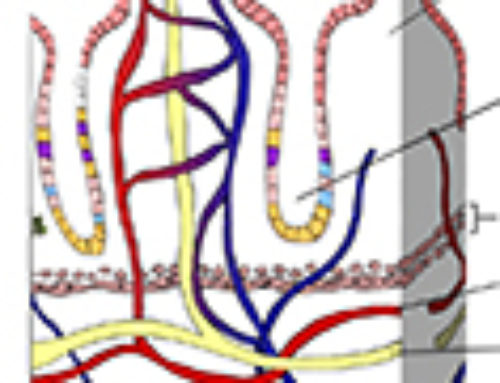
Cholesterol is a waxy, fatty substance which is produced naturally by the liver but is also obtained from the diet. Dietary cholesterol is found in animal products such as meat and dairy, and is also found in some plant derived oils including; coconut, palm and cocoa oil. Cholesterol is essential for animal cellular function and plays a number of important roles in the human body, including, the production of hormones, vitamin D, bile acids and is an integral part of cell membranes. Whilst cholesterol is important, the body requires only a small amount and excess cholesterol can cause a number of health complications.
To enable cholesterol to travel through the bloodstream it is transported in small packages made up of fat and protein. These packages are called lipoproteins and are classified into two main groups, low-density lipoproteins (LDLs) and high-density lipoproteins (HDLs).
LDL’s are classified as bad cholesterol, as these lipoproteins are responsible for depositing excess cholesterol on artery walls. This excess cholesterol combines with calcium to form a thick hard plaque, causing the artery walls to harden and become narrow. This process is called atherosclerosis and is responsible for restricting blood flow through affected arteries decreasing the amount of oxygen that reaches the heart causing chest pain (angina), and increasing the risk of developing heart disease. In some instances a piece of plaque may break of into the bloodstream where it can get lodged in a smaller artery or a blood vessel, stopping blod flow altogether. If this happens in the heart it causes a heart attack, whilst if it happens in the brain it causes a stroke.
HDL’s are regarded as good cholesterol as they extract cholesterol from artery walls and carry it back to the liver, which is responsible for removing excess cholesterol from the body. Whilst it is important to maintain a low level of total cholesterol (both HDLs and LDLs) in the body, higher levels of HDLs and lower levels of LDLs are desirable.
Both HDL and LDL levels are influenced by various lifestyle factors with a big factor being diet and exercise. Genetic factors can also influence cholesterol levels and those with a family history of heart disease are most likely to be at a greater risk of having high cholesterol. Individuals can manage their cholesterol levels through diet exercise and medications and by doing so reduce their risk of developing associated health disorders.
Ensuring an appropriate ratio of HDLs and LDLs whilst maintaining a low, overall level of cholesterol (total cholesterol), can limit the formation of plaques and also reduce existing plaques. This will also reduce the risk of plaque material breaking off and stopping blood flow through small arteries and blood vessels, ultimately reducing an individuals risk of developing heart disease or suffering from a heart attack or stroke. Regular health checks can allow individuals to monitor their cholesterol levels and manage their risk of high cholesterol.
Sign and Symptoms
There are no early indicators for individuals with high cholesterol levels and this health complication is primarily discovered through a blood test. Individuals with a family history of high cholesterol or who have a diet high in saturated fats, oils and animal derived foods are at a greater risk and should have their cholesterol levels checked. High cholesterol levels can lead to a number of health problems such as heart disease, stroke, diabetes and others. These conditions can be life threatening and as such it is important to maintain low cholesterol levels.
Several tests must be carried out on blood samples to determine cholesterol levels and the ratios of HDL’s, LDL’s, and Triglycerides. These levels determine whether an individual has excess cholesterol in their blood stream and are characterized in the table below.
Levels of cholesterol are measured in milligrams (mg) of cholesterol per deciliter (dL) of blood.
| RISK LEVEL | Total Cholesterol | LDL | Triglycerides | RISK LEVEL | HDL |
| Optimal Level | > 200 mg/dL | > 100 mg/dL | > 150 mg/dL | High | > 40 mg/dL |
| Near/above Optimal | 100-129 mg/dL |
|
|
|
|
| Borderline High | 200-239 mg/dL | 130-159 mg/dL | 150-199 mg/dL | Medium | 40-59 mg/dL |
| High | < 240 mg/dL | 160-189 mg/dL | 200-499 mg/dL |
|
|
| Very High | < 190 mg/dL | < 500 mg/dL | Low | > 60 mg/dL |
Causes
Primarily, high cholesterol is caused by a diet high in saturated fat, and cholesterol coupled with an inactive unhealthy lifestyle. Certain genetic conditions can cause individuals to have high cholesterol levels and it often runs in families.
A number of factors can influence your cholesterol levels, including;
Diet and Lifestyle
A diet high in cholesterol, saturated fat and trans-fatty acids (found in hydrogenated vegetable oils such as margarine) along with being overweight and living an inactive lifestyle, increases LDL and triglyceride levels and results in low levels of HDLs. Smoking and mental stress can further exacerbate high cholesterol. Moderate alcohol consumption increases HDL levels but can cause other serious health problems and is not recommended for preventing high levels of LDLs.
Other Health Disorders
High blood pressure, diabetes and a family history of heart disease are all associated with high cholesterol.
Age and Sex
Young women often have lower cholesterol levels then men. In both sexes cholesterol levels increase with age and after menopause, women often have higher levels of cholesterol than men.
Complications
Whilst high cholesterol in its self doesn’t cause any health problems but rather it increases an individual’s risk of developing a number of life threatening conditions.
These conditions include:
Coronary Heart Disease- high cholesterol levels cause a buildup of cholesterol in artery walls. This buildup of cholesterol forms a plaque, causing the arteries to harden and become narrow, ultimately slowing and limiting the flow of blood to the heart. Limited blood flow decreases the level of oxygen that reaches the heart causing angina (chest pain) and in some cases can completely restrict blood flow causing a heart attack. This complete restriction is often caused by a piece of plaque breaking off and blocking a blood vessel.
Peripheral Vascular Disease – high cholesterol can result in a build up of fatty deposits in artery walls inhibiting blood circulation predominantly to the legs and feet.
Stroke – by the same mechanism seen in coronary heart disease, blood vessels leading to the brain can become blocked or can burst, stopping the flow of oxygen to brain, causing it to die.
High Blood Pressure- also known as hypertension, can result from high cholesterol levels which causes the heart to strain harder to pump blood through the narrow and hardened arteries.
Possible treatment methods
The safest, most effective way to treat high cholesterol is too modify diet and lifestyle so as to decrease total cholesterol levels, particularly decreasing LDLs and triglycerides and ensuring a desirable level of HDLs. Regular exercise and maintaining a healthy weight (or losing weight if over weight) along with a diet low in saturated fats and cholesterol and high in soluble fiber, can all assist in reducing high cholesterol and as such, the risk of heart disease.
In some instances these modifications may not be effective in reducing high cholesterol levels, in which case there are a number of medications that can be taken. These medications include:
Statins
These are commonly used to treat high cholesterol and lower LDL levels by reducing the body’s production of cholesterol and increasing removal of LDLs in the blood. Although rare, statins can cause life threatening liver problems and muscle degradation in some individuals.
Bile Acid Sequestrants
These are often prescribed with statins to increase their effectiveness and function by removing cholesterol from the body.
Nicotinic Acid
This is a form of niacin and has been shown to lower LDL and triglyceride levels whilst raising HDL levels. This treatment however has a higher rate of negative side effects and must be taken under strict doctor supervision.
Fibrates
These are mainly effective in lowering triglyceride levels and have been shown to increase HDL levels. They can however, increase the risk of negative side effects if taken with statins.
Cholesterol absorption inhibitors
These drugs work by stopping the intestinal absorption of cholesterol into the blood stream and thereby lowering LDL levels.
Alternative therapies
Changing your eating habits to enjoy healthier options is an effective way to reduce cholesterol. A diet high in soluble fiber has been associated with reduced cholesterol levels and can be obtained as a dietary supplement or is found in a range of fruits and vegetables and in oats, barley and rye.
Niacin (nicotinic acid) is available as a dietary supplement but can have severe side effects and should only be taken if recommend by a doctor. Artichoke Leaf
is another natural alternative as are a number of supplements including policosanol, garlic, pantothine and coenzyme Q10 and plant sterols and stanols.
http://www.emedicinehealth.com/high_cholesterol/page3_em.htm
http://www.nhlbi.nih.gov/health/dci/Diseases/Hbc/HBC_WhatIs.html
http://www.medicinenet.com/cholesterol/article.htm




Leave A Comment